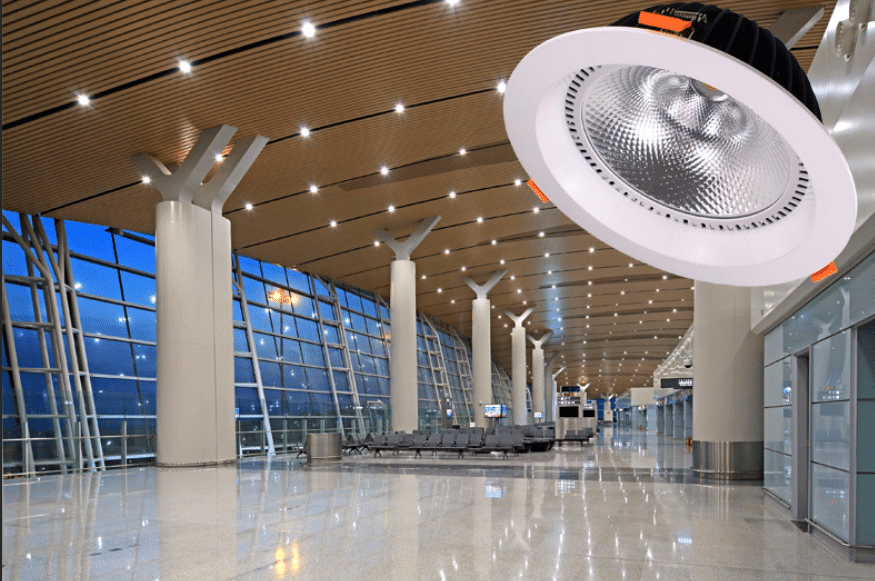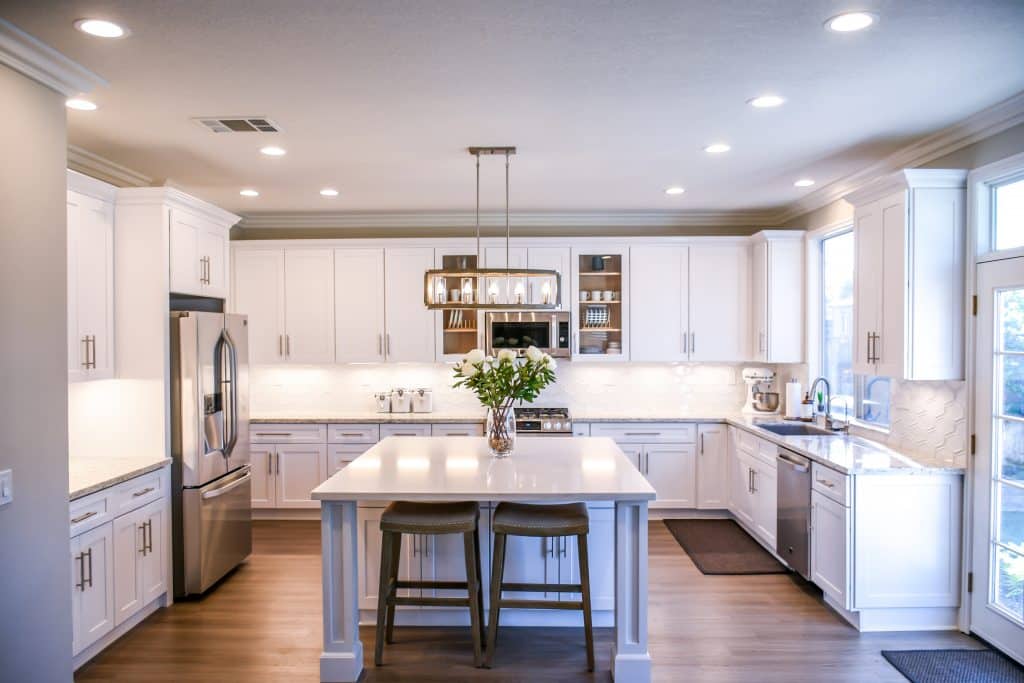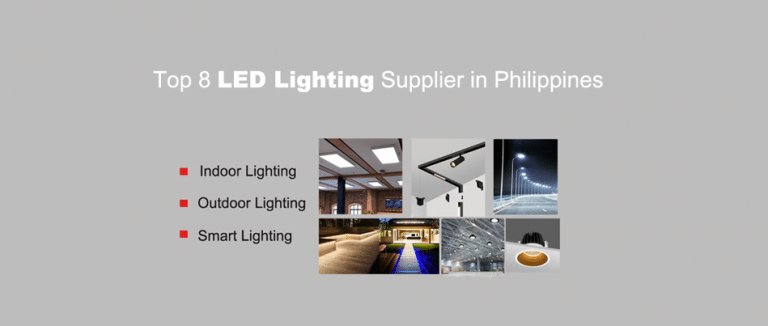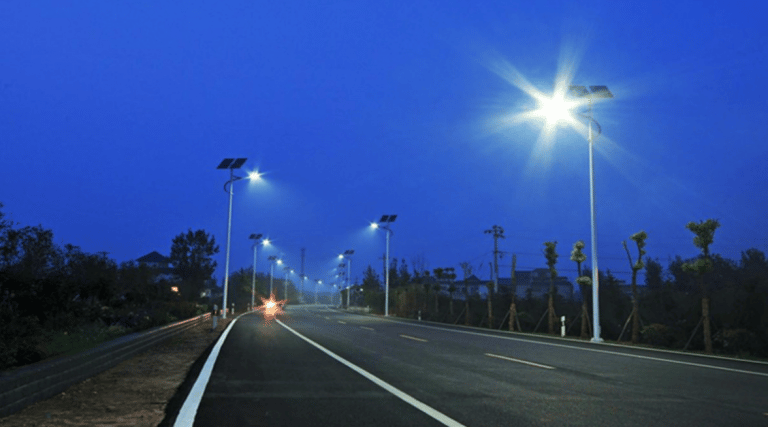
Lighting is an essential aspect of any room, and LED downlights have become increasingly popular due to their energy efficiency, long lifespan, and versatility. The design of the LED downlight is more beautiful and lighter. It can maintain the overall unity and perfection of the architectural decoration during installation without destroying the setting of the lamp. The light source is hidden inside the architectural decoration. LED light is not exposed, has no glare, and the human visual effect is soft and uniform. And there are 5-50W recessed and surface downlights for your choice.
Due to all the advantages of LED downlights, it is widely used in indoor lighting like shopping malls, offices, factories, hospitals, hotels, homes, coffee shops, etc.
However, determining the number of LED downlights required for a room can be challenging, as it depends on various factors such as color temperature, room size, ceiling height, the LED lights’ beam angle, and desired brightness. the purpose of the room, the color of the walls, and the type of lighting you choose…
In this blog, we will provide a comprehensive guide on how many LED downlights per room calculator.
Step 1: Determine the Room Area
The first step in calculating the number of LED downlights required for a room is to determine the room’s area. Measure the length and width of the room and multiply them to get the room’s total area in square feet. For example, if a room measures 12 feet by 15 feet, the total area would be 180 square feet.
Step 2:Determine the lumen of the room needed
The purpose of the room will determine the recommended level of brightness in lumens. For example, a living room typically requires 1,500-3,000 lumens, while a bedroom may only need 800-1,500 lumens. In general, the living room needs 1W of LED lights per square meter, the bedroom needs 0.8W of LED lights per square meter, the kitchen needs 1.1W of LED lights per square meter, the bathroom needs 0.9W of LED lights per square meter, and the study room needs 2W of LED lights per square meter. For LED lights, the lumen is about 100lm/W.
Step 3:Determine the height of the ceiling
If the ceiling is higher than 8 feet, you may need to add more lumens to compensate for the additional height.
Step 4:Determine the color of the walls
Darker-colored walls absorb more light, while lighter-colored walls reflect more light. If your walls are a darker color, you may need to add more lumens to compensate.
Once you have determined the above factors, you can use the following formula to calculate the number of lights required for your room:
Light number = (Square footage of the room x Recommended level of brightness in lumens) ÷ (Height of the ceiling x Wall color factor x Lighting factor)÷100lm/w÷lamp power Watt
The wall color factor and lighting factor are both subjective and depend on your specific situation. As a general rule, you can use a wall color factor of 0.7 for darker walls and 1.0 for lighter walls, and a lighting factor of 1.0 for LED lights
Remember that this is just a guideline, and the actual number of lights you need may vary depending on your personal preferences and specific situation.
How many downlights do I need? And what is the spacing? If you are still unclear, please click on this downlight calculator; it is easy to use.
Take the home lighting as an example, we listed a table, different sizes of the room area for different watts of LED lights, making it easy to understand

Living room lighting needs to be bright: the living room generally takes up a relatively large area in the whole house, but also the main activity area, so to make it bright enough, wattage requirements are relatively high. At the same time, a bright and transparent lighting environment will also make the living room look more atmospheric. Therefore, we generally recommend that the living room lighting wattage selection be 60-450W.
Bedroom lighting should be soft and warm: the bedroom is only used for sleeping and resting, so it needs soft light, not harsh, and no glare. Therefore, we usually do not recommend that the bedroom lighting be too bright. Depending on the area, the light source wattage selection between 13-50W is OK.
Kitchen lighting should be bright enough: In a way, kitchen lighting actually belongs to the operational lighting. However, the difference is that the kitchen lighting operation area is relatively small, requiring relatively concentrated light. Subtle movements like chopping and washing vegetables must be precisely lit to avoid unnecessary, unhygienic, and even dangerous situations. We recommend that the kitchen’s local work lighting range from 8-38W
Elderly room lighting should be brighter: due to the weakness of the elderly’s vision, the same lamps and lanterns, the elderly feel less than young people.
Therefore, if you want to let the elderly feel the normal brightness, you need to increase the wattage of the lamps
So, the young people’s bedroom light source with 13-50w is enough, but the elderly room to 25-100w.
Children’s room lighting should be soft but bright enough: contrary to the elderly, children’s retina development is not yet complete, so too bright light will cause negative stimulation of the eyes. Therefore, the light in the children’s room does not have to be too bright, or even can be pressed dark, does not matter. Usually, we will choose the light source of children’s room lamps in a range of 13-50W

The recommendations in the table are only recommendations and are just to be relatively reasonable. We also need to choose the light source according to your family’s habits. Some people like brighter, some people just like a little darker, as long as it is not too far, there is no problem, you do not need to be too serious.
Now we know how many downlights per square meter, but someone will ask, what is the distance from the wall? Normally, it is 15-20cm.
Conclusion: Lighting design is not the selection of lights; it is a technical and artistic work. If you really do not have the time and professionalism to DIY lighting design, you might as well find a professional LED light supplier in China!

Hello, customers
My name is Ricky Wang, I’m the business manager of GRNLED. I have been in LED lights industry for more than 10 year. Feel free to contact us. I’m happy to provide you the best service and products.
Email: info@grnled.com | WeChat: ledfixture






